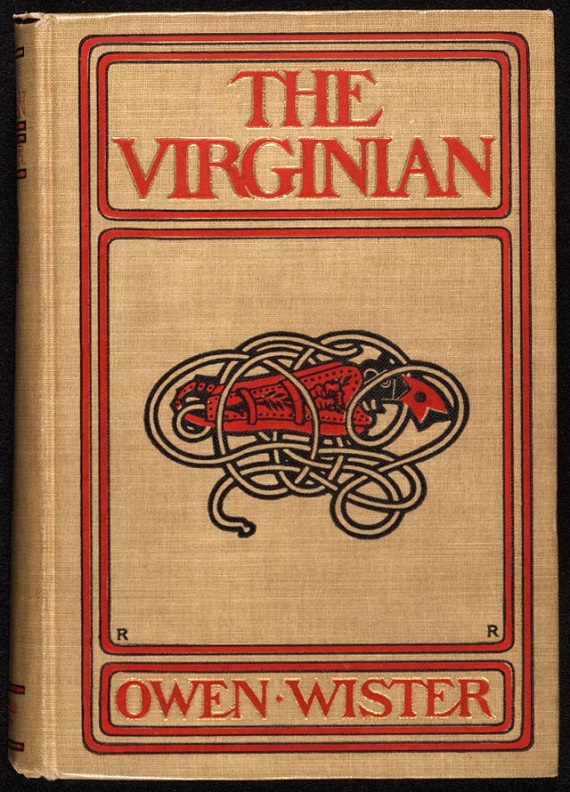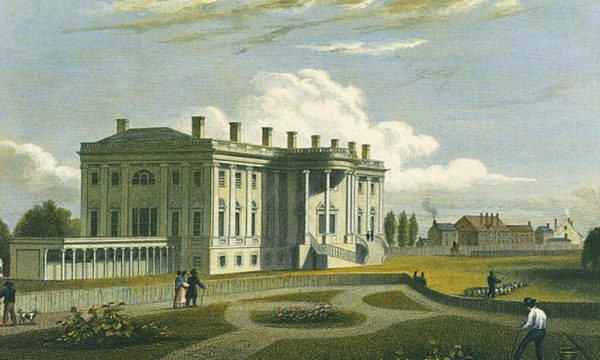Part 4 in a 5 part series. Part 1, Part 2, Part 3.
In 1902 the Philadelphia aristocrat Owen Wister published what has been called “the first true Western novel.” It was set in Wyoming and entitled The Virginian: A Horseman of the Plains.
Think about it. What is “a Virginian” doing in Wyoming? In fact, Wister was right on target. He was realistic since Southerners were always present and usually predominant wherever there was an American “West.” The cowboy, insofar as he is a heroic, chivalric figure and not merely a labourer in the hard and dirty business of moving livestock on the hoof, is a Southern gentleman moved to a new environment. This is quite true both as fact and as barely understood American legend. In fact, the Cattle Kingdom began in the colonial South long before it reached Texas and merged with the Mexican version. And it was Texans who spread the Cattle Kingdom to the Northern plains, although Yankee and Brit capitalists swiftly moved in. (The late great Mel Bradford once told me that there was a very large Confederate flag prominently displayed in the Cattleman’s Club in Cheyenne. No telling if that is still so.)
It is also interesting that Wister has “the Virginian” win and convert a Yankee schoolmarm to better ways of thinking. We can understand this more clearly when we observe that in another novel, Lady Baltimore, Wister contrasted impoverished but genteel Charlestonians most favourably with the new rich of Yankeeland.
A half dozen or more movie versions and a television series of “The Virginian” have usually missed the point and treated the story as simply generic Hollywood “Western” with stars that seldom bore any resemblance to Virginians. This is not surprising since American thought, writing, discussion, and cinema presentation of “the West” is very confused and lacking in any clear idea of what the term should mean. Of course, Hollywood usually means by “the West” the Rocky Mountains and Great Plains, the last settled region. But the West actually began in 1607 just beyond the palisades of Jamestown in Tidewater Virginia and was a moving process for almost two centuries. The historian Frederick Jackson Turner, a Midwesterner, famously announced that the frontier ended in 1890—but he did not allow for the Texas and Oklahoma oil men and other Americans who pioneered Alaska after that date.
Wister might get some satisfaction out of the current television series called “Longmire,” about a Wyoming sheriff. The star, played by an Australian, and several other main characters talk with Southern accents.
The West was mostly a Southern phenomenon. Southern leaders made all the great territorial acquisitions that provided new lands for Americans—always against bitter Northeastern opposition. Southerners were present everywhere during the great period of Western movement and were earliest and predominant everywhere except the Great Lakes and the Pacific. The American consciousness has put this truth down the memory hole: while West is assumed to be good and American (i.e., Northern) and the South to be bad and un-American. This is done automatically and without reflection. The treatment of Texas provides a proving ground for this observation: if one likes Texas and wants to present it favourably, then it is “Western.” If one does not like Texas and wants to give it a bad rep then it is “Southern.” Of course, Texas is simply Texas, unimaginable except as a creation of Southerners and an extension of their homeland in new conditions. Consider the difference between the sodbusters of Kansas and North Dakota and traditional Texans.
Years ago I saw a documentary dramatization of American history. I don’t remember the subject—perhaps it was the Monroe doctrine. Except for John Quincy Adams every important character was a Southerner—James Monroe, Henry Clay, Andrew Jackson, William H. Crawford, and John C. Calhoun. But Calhoun was the only one portrayed with a Southern accent. Calhoun is Southern, i.e., bad. The other characters are good, therefore they are “American,” i.e. honourary Northerners. There has probably never been a film made in which George Washington did not talk like he was from Illinois.
This cultural imperialism is displayed to perfection in the 1960 blockbuster The Alamo. John Wayne directed and put his own money into the production. It is gung ho American nationalism. The great Texan heroes are played by Wayne (Iowa), Richard Widmark (Nebraska), Lawrence Harvey (Brit), and Richard Boone (California). Even the urban crooner Frankie Avalon, who was reportedly terrified by snakes during the shooting, was cast as a defender of the Alamo. You would think that the Alamo was an accomplishment of the U.S. Army. In fact, the Alamo was an entirely Southern phenomenon with which the U.S. had nothing to do. It was fought by Southern volunteers who were condemned at the time as pirates and barbarians by respectable Northern thinkers. The Yankees did everything they could to prevent Texas joining the Union and then hardly a decade later mounted a massive invasion to conquer its people and exploit their natural resources. From the television series at about the same time about Davy Crockett with the coonskin cap, you would never know that Crocket dressed well, that he owned slaves, and that his family supported the Confederacy. The same is true of Daniel Boone.
The 2004 version of The Alamo is greatly superior to Wayne’s conception in authenticity and every other way. The heroes are played much more realistically by native Texans Dennis Quaid and Billy Bob Thornton and Virginia-born Patrick Wilson. So there sometimes really is improvement in Hollywood.
An interesting case study is the Lonesome Dove miniseries. I have not read the Larry McMurtry books on which the series was based, but given that McMurtry is very popular, I suppose the book omitted his characters’ experiences in the Confederacy and Reconstruction, as did the series. Of course, Texas Rangers were deeply involved in both these times. But the heroes seem never to have been bothered with either despite a long time span covered. Only in a late-produced prequel, Comanche Moon, is there a slight mention of the troubles caused by vindictive Yankees in Reconstruction, which in fact were very serious.
Nevertheless, the actors, like native Texans Tommy Lee Jones and Sissy Spacek, Robert Duvall, and Oklahoma-born James Garner all talk as they should do. Even Barbara Hershey does a pretty good accent. The moguls of Hollywood are ignorant of everything that is authentically American, but unwittingly they have made the characteristic Western speech a Southwestern speech. Often the characters in Westerns talk like they were Southern whether they are or not. In an old one like Fort Dobbs Virginia Mayo struggles to talk with a Southern accent about half the time. In the more recent Riders of the Purple Sage, Ed Harris, New Jersey born, gives the Western hero a definite Southern accent even though the story apparently takes place in Utah.
Dixie is not always conveniently suppressed in Western flicks however. In Texas (1941) William Holden calls a carpetbagger judge “a dirty Yankee.” In The Missouri Traveler (1958) Lee Marvin comes unscathed through a lavish presentation of the Southern flag and anthem.
The schmaltzy Western movies and TV series of the 1950s and later perpetrated a cultural atrocity which should be eternally shameful were Americans any longer able to experience any shame. Several generations got their ideas of the West from Roy Rogers (Leonard Slye from Iowa) singing “Happy Trails” in movies that were utterly anachronistic in their time settings. Or from showbiz celebrities from the Northeast pretending to be cowboys. Or blue-eyed starlets impersonating Indian maidens with the aid of heavy make-up. Even the horses became stars. And there were the comic Westerns like Silverado. The great and grim civilisational feat of the conquest and settlement of a continent became commercial fluff.
The moguls were so ignorant of anything authentic that they almost always hopelessly misused the honourable terms “sheriff” and “marshal.” A sheriff is an elected official of a county, not a local officer who can be removed at will. And a U.S. Marshal is an officer of a federal court with a wide jurisdiction, although there can be, I suppose such a person as a Town Marshal.







